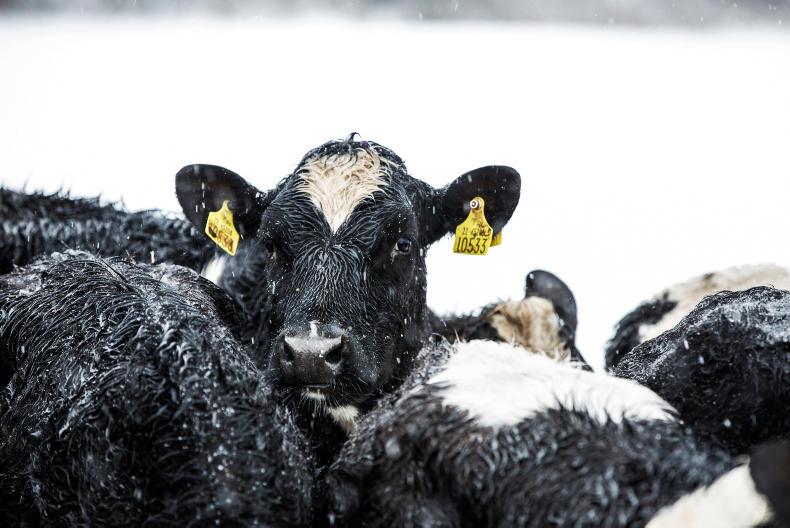Average grass growth for the past week has been one-third of the normal rate at 9kg DM/day. This time last year, it was 28kg/day.
The last time growth rates were this low was in 2013 and it wasn’t until late April in that year that growth increased to normal rates.
Soil temperatures for the past seven days across the country are around 6°C, which is the minimum required for growth to occur. Slurry remains an issue on many farms, with very little fertiliser spread around the country.
The delay in turnout has meant that sheds are backed up with stock and health issues like scour and pneumonia are starting to appear on some farms.
The forecast for next week is looking better and there is already a slight improvement in growth.
Southerly breezes and temperatures of up to 13°C degrees with some showers are forecast for Easter Monday.
Irish winters are getting wetter and summers drier, according to new research from Maynooth University. For the first time, we can take a look at rainfall figures for the last 305 years and see what sort of extremes the country has experienced.
“The direction of travel in the data we have shows we are having wetter winters and drier summers, which is consistent with observations of climate change,” said Dr Conor Murphy, lead researcher on the paper A 305-year continuous monthly rainfall series for the island of Ireland.
“The most recent decade was our wettest on record, and when we look at the long-term context, we see a continuous rise in annual and winter rainfall.”
The flooding in the winter of 2015-2016 and the storms in the 2013-2014 winter make them the first and second wettest Irish winters on record. The winter just passed is not included in the figures.
But the decade 2006 to 2015 was Ireland’s wettest on record, with 10-year average rainfall of almost 1,990mm/yr, compared with a long-term 300-year average of 1,080mm/yr.
The driest decade on record was 1740 to 1749.
Read more
Grass+ Dairy: no big change in growth rates
Grass+ Beef: feast for some, famine for most
Average grass growth for the past week has been one-third of the normal rate at 9kg DM/day. This time last year, it was 28kg/day.
The last time growth rates were this low was in 2013 and it wasn’t until late April in that year that growth increased to normal rates.
Soil temperatures for the past seven days across the country are around 6°C, which is the minimum required for growth to occur. Slurry remains an issue on many farms, with very little fertiliser spread around the country.
The delay in turnout has meant that sheds are backed up with stock and health issues like scour and pneumonia are starting to appear on some farms.
The forecast for next week is looking better and there is already a slight improvement in growth.
Southerly breezes and temperatures of up to 13°C degrees with some showers are forecast for Easter Monday.
Irish winters are getting wetter and summers drier, according to new research from Maynooth University. For the first time, we can take a look at rainfall figures for the last 305 years and see what sort of extremes the country has experienced.
“The direction of travel in the data we have shows we are having wetter winters and drier summers, which is consistent with observations of climate change,” said Dr Conor Murphy, lead researcher on the paper A 305-year continuous monthly rainfall series for the island of Ireland.
“The most recent decade was our wettest on record, and when we look at the long-term context, we see a continuous rise in annual and winter rainfall.”
The flooding in the winter of 2015-2016 and the storms in the 2013-2014 winter make them the first and second wettest Irish winters on record. The winter just passed is not included in the figures.
But the decade 2006 to 2015 was Ireland’s wettest on record, with 10-year average rainfall of almost 1,990mm/yr, compared with a long-term 300-year average of 1,080mm/yr.
The driest decade on record was 1740 to 1749.
Read more
Grass+ Dairy: no big change in growth rates
Grass+ Beef: feast for some, famine for most






 This is a subscriber-only article
This is a subscriber-only article










SHARING OPTIONS: